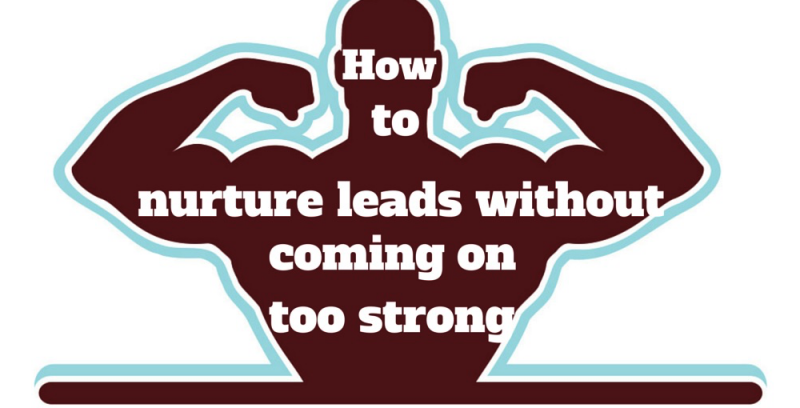Buy me dinner first: How to nurture leads without coming on too strong
According to a recent benchmark study by Marketo, 50 percent of leads aren’t ready to buy yet. That’s why it’s important to nurture them for a while and separate those who will never buy from those who will.
With advanced marketing automation software, companies can see a prospect’s behavior on their website virtually in real time. As consumers, we all know this on some level, but when your sales rep calls me while I’m still perusing your website or before my e-book is even finished downloading, I am forever turned off from whatever it is you’re selling.
Here’s why:
- I haven’t had a chance to determine whether what I’ve downloaded is going to help me solve a problem, or simply take up space in my cloud
- I stumbled upon your content while doing at least five or six things at once (and definitely don’t have time to hear a sales pitch)
- I want to conduct additional research to compare solutions, if I’ve even identified what they are at this point
If your organization funnels all leads (not just qualified ones) you aren’t alone: according to MarketingSherpa, 61 percent of marketers pass all leads directly to sales; however, only 27 percent of those leads are qualified.
Still need convincing that lead nurturing is essential? HubSpot has a great list of stats on the subject, including:
- Nurtured leads make 47% larger purchases than non-nurtured leads. (The Annuitas Group)
- 79% of marketing leads never convert into sales. Lack of lead nurturing is the common cause of this poor performance. (MarketingSherpa)
- 79% of B2B marketers have not established lead scoring. (MarketingSherpa)
- Companies that excel at lead nurturing generate 50% more sales ready leads at 33% lower cost. (Forrester Research)
Here are some steps your marketing and sales teams can take to better qualify leads and avoid missing opportunities due to coming on too strong.
- Don’t be too salesy or promotional: Nothing you send in a lead nurturing campaign should feel like a sales pitch. Consider using text-only emails to add a more personal touch to your message. (All emails should come from real people, not noreply@yourcompany.com)
- Use your lead intelligence to customize the message: go beyond first name to include relevant info about industry, problem, previous engagement with your content, etc. Even anonymous visitors can tell you their IP address (which translates to company size, industry and other valuable intel).
- Score those leads: what makes a lead qualified enough to get contacted by sales? That depends on your organization, the typical sales cycle and your target personas. Your marketing and sales teams need to have a powwow and determine at which point your leads are “qualified” enough to be passed to sales. Marketo and HubSpot both provide custom lead scoring options, where you can assign points to every interaction a prospect may have with your organization–from subscribing to your blog to visiting the pricing page of your website. Once a lead reaches a certain number of points (as determined by your team), that info is passed along to sales, where at this point, the qualified lead should be ready to make a decision. Here’s a great resource from Marketo on getting started with lead scoring.
- Map out communication timing based on your sales cycle: it only makes sense that you’d want to nurture your leads for a longer period of time if your average buying cycle is 90 days or more. Set up automated workflows with decent time delays between each touch (I prefer to schedule them at least five business days apart, unless they are triggered by an additional download or some other action by the lead).
- Know when to call it quits: some leads will never buy, but they can become advocates and refer their friends and peers. After you’ve spent a reasonable amount of time and effort providing useful content that doesn’t close, send a final “breakup” email that provides a last-ditch effort and an alternative method of assisting them. For example, suggest they subscribe to your blog (if they haven’t already, of course), or send a list of FAQs related to their problem.
Lead nurturing strategy and execution isn’t something that will happen overnight. Be patient, keep the lines of communication open between sales and marketing teams and always remember to focus on your prospects, not your products.
What’s your strategy for moving leads down the funnel or handing them over to sales without being too pushy? Please comment below or send me an email at heather@rep-ink.com.










[…] leads – don’t come on too strong with a “buy now” offer as soon as someone completes a form on your site. You must plan […]